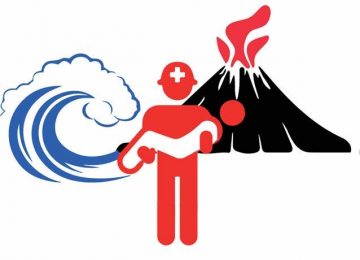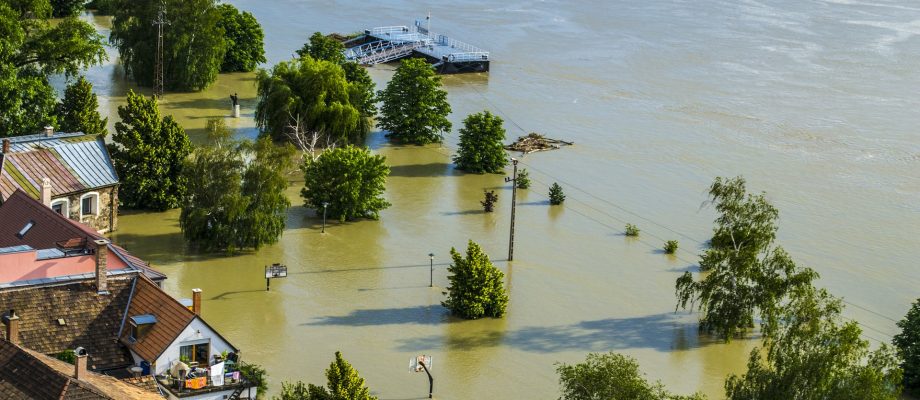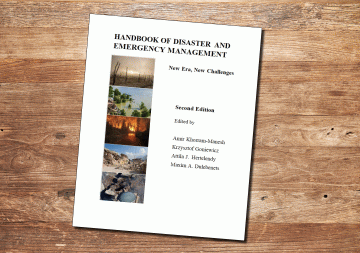BOOK. This Handbook, first published in 2017, has now been issued in an updated edition, with the subtitle “New Era, New Challenges”. It is freely accessible online, so that the knowledge it contains can reach all those who need it here and now, and everyone who wants to prepare for the worst. Amir Khorram-Manesh of the Institute of Clinical Sciences is a contributing editor.
Globally, during the current pandemic, more and more people have realized how fragile our infrastructure is and how – even in high-income countries like Sweden – our public agencies, unprepared for reality, seem to be fumbling. Everywhere, disasters and public health crises continue to hit the most deprived and vulnerable most, and the current pandemic is no exception.
The Handbook of Disaster and Emergency Management was first published in 2017. The book’s authors hope to be able to convey, both to those who need it here and now and to those who wish to prepare for the worst, the knowledge that is currently available worldwide.
Theory and practice
It is a proven truth that no theoretical lessons can be of practical benefit unless the knowledge is tested in the right environment. In this area, moreover, the research is carried out and reports are issued largely in high-income countries, while most disasters occur in middle- or low-income countries. To translate theory into practice among those who are genuinely exposed to a disaster or major incident and affected by its interdisciplinary management, bringing together the varying perspectives of these settings is an acute need.
“Our goal with the book is, as before — unlike all the major reference works — to offer simple and above all accessible guidance for professionals involved in the management of disasters and major incidents,” says Amir Khorram-Manesh, associate professor and adjunct senior lecturer at the Department of Clinical Sciences. He is also one of the editors and co-authors.

Pandemics and civil cooperation
The book’s 32 chapters broadly address a wide range of topics, including aspects of disaster medicine for victims of accidents and terrorist attacks; organizational structures, logistics and forms of cooperation; risks, vulnerability, ethics and morality; food management; nursing education for a country’s inhabitants; and recovery and reconstruction.
“We haven’t deleted anything, but we saw that by merging some chapters we could insert new ones on, for instance, pandemics and civil–military cooperation, and one on finance, future research and development as well. Many chapters have also been revised because the first edition was linked with an educational program we ran in Ukraine, with funding from the EU’s European Civil Protection and Humanitarian Aid Operations (ECHO). This new edition, with its freestanding, short and concise chapters, is internally funded. That’s precisely because it affords the freedom to launch it to any country, whether rich or poor, and subject to few or many disasters.”

The book has 29 co-authors, including the four editors. Besides Amir Khorram-Manesh, The other three editors are Krzysztof Goniewicz, Attila J. Hertelendy and Maxim A. Dulebenets. All 29 contributors are researchers in various parts of disaster and crisis management that influence the entire long chain.
“The book’s now more complete, and all the contributors are skilled researchers and practitioners in this area. We’ve also now dedicated it to Professor Frederick Burkle,* a man many of us to look up to in the field.”
The first edition was free of charge, and it was downloaded over 60,000 times in just over four years. Readers could also order it in bound paper format from various printing companies for a given price. The same applies to the second edition, which will also be available at every library. In addition, the co-authors will all ensure that the information is disseminated in their respective networks, and it will be uploaded to all the public websites, such as Research Gate and Zenodo.*
National Disaster Medicine Conference
On 16–17 September the national conference on disaster medicine was held, this year in Gothenburg and in digital form. Amir Khorram-Manesh was one of the people responsible. The purpose of the conference is to convene academics, researchers and strategic, tactical and operational companies active in Sweden — in short, anyone involved in the subject areas of civil defense and disaster and emergency medicine.
“The purpose of the meeting was to offer an interdisciplinary platform for presenting and discussing the latest innovations and trends, and also practical challenges and potentially useful solutions in the areas of civil defense and disaster management. We had 156 registered attendees, and the questionnaire responses show that over 90 percent were satisfied with it. We’re very happy with that,” says Amir Khorram-Manesh.
There is now a “National Disaster Medicine Council” that is seeking to bring together all parties with an interest in disaster medicine issues. Karolinska Institute will hold the Conference In 2022, and the hope is that it will take place physically on site.
A poem from the book
“Adam’s sons are body limbs, to say;
For they’re created of the same clay
Should one organ be troubled by pain
Others would suffer severe strain
Thou, careless of people’s suffering
Deserve not the name, “human being”
From Saadi Shirazi, translated by H. Vahid Dastjerdi
BY: SUSANNE LJ WESTERGREN












